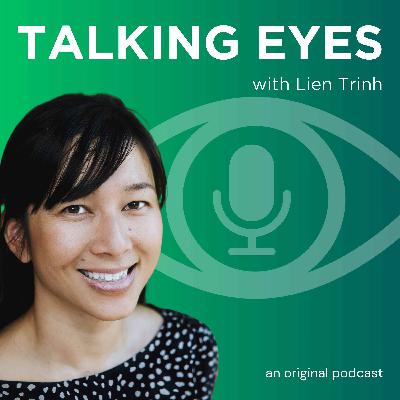Controlling Myopia at the Cornea with Dr. Nina Tahhan
Description
By 2050, half of the world’s population is expected to be myopic — and that comes with serious risks to lifelong vision. In this episode, host Lien Trinh speaks with Dr Nina Tahhan about how modern lifestyles are reshaping the way our eyes grow, why earlier onset is such a concern, and how cornea-based interventions such as soft myopia-control lenses and orthokeratology can slow progression and protect the next generation from irreversible vision loss.
In this episode:
- The alarming rise of myopia worldwide and its impact on blindness and visual impairment
- Why central vision loss from myopic maculopathy is irreversible
- Evidence-based prevention and the role of environmental and lifestyle factors — less time outdoors, more close work
- How orthokeratology and specialised soft lenses reshape the cornea and retinal image profile to slow eye growth
- Safety of contact lenses in children — infection risks, hygiene, and follow-up care
- Practical advice for families: fitting, wearing time, and clinician partnership
Key takeaways:
- Myopia is not just about glasses. It’s a structural condition that increases lifetime risk of retinal and macular disease.
- Outdoor time matters. Even a modest increase in outdoor play significantly reduces risk of myopia onset.
- Optical treatments work. Myopia-control contact lenses and orthokeratology have robust clinical evidence in slowing progression.
- Children can safely wear lenses when properly fitted and supervised.
- Regular reviews are essential — early detection and consistent follow-up protect long-term eye health.
Resources:
- International Myopia Institute (IMI): https://myopiainstitute.org — global research consensus and practitioner resources
- Brien Holden Vision Institute Myopia Calculator: https://bhvi.org/myopia-calculator — estimate risk and treatment effect
- Optometry Australia Clinical Guidelines: https://www.optometry.org.au
- Information for Parents: https://www.mykidsvision.org/
Disclaimers
This episode is for education only and not individual medical advice. Always follow your own eye-care professional’s guidance for lens type, care system, and wear schedule.
Acknowledgements
Produced with support from Humdinger Studio (Melbourne), Gulwa Recording Studio (Darwin), the University of Melbourne, the Centre for Eye Research Australia, Optometry Australia, and Mivision.
Follow us on Facebook and Instagram @talkingeyespodcast for updates and behind-the-scenes content.
Hosted on Acast. See acast.com/privacy for more information.







